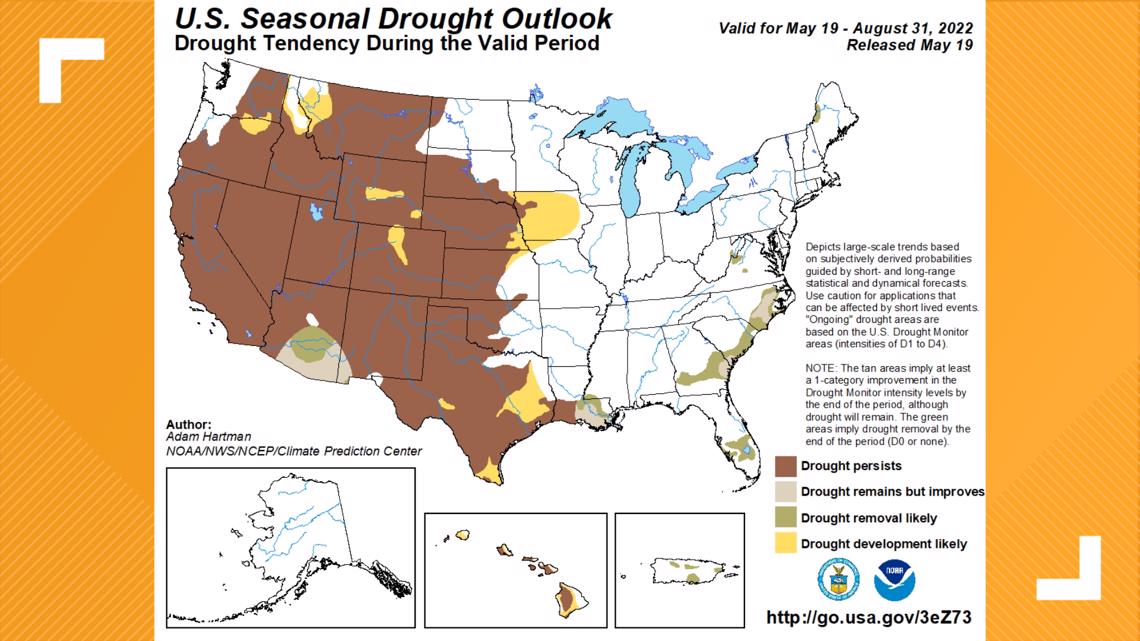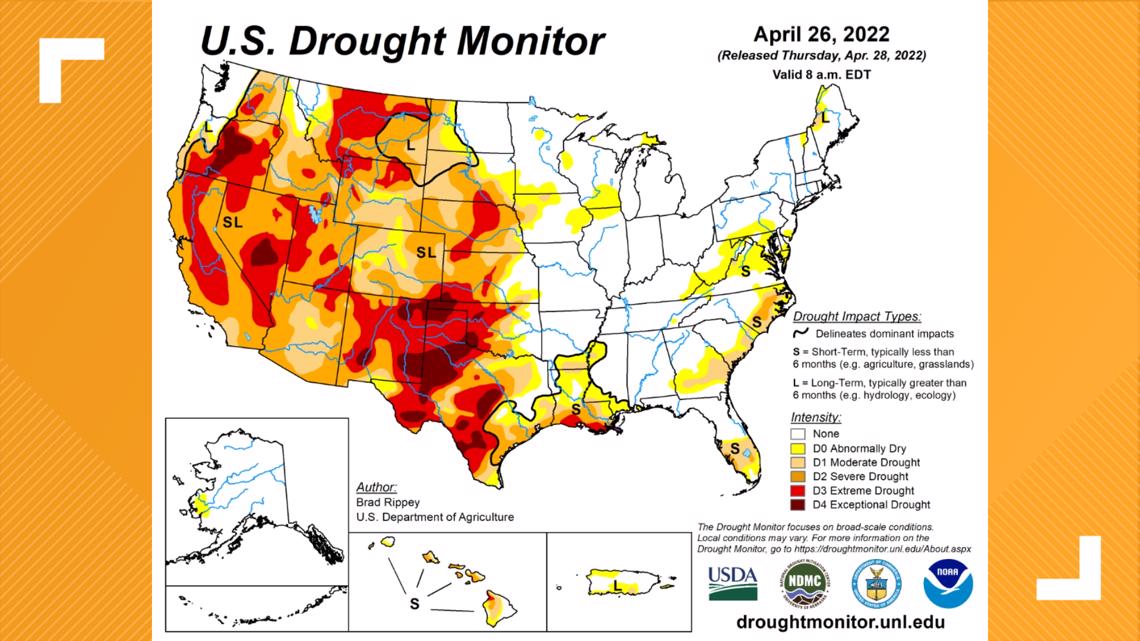OLYMPIA, Wash — With many counties in eastern Washington experiencing moderate to severe drought conditions, the National Interagency Fire Center (NIFC) is anticipating an above-average wildfire season in the summer.
While western Washington has had a wetter and cooler than normal spring, the NIFC said central and southern parts of Washington have already reached an "above-normal risk" for wildfires. Eighteen Washington counties – all east of the Cascade Mountains – are currently experiencing moderate to severe drought conditions.
A monthly report from the NIFC said central Washington is expected to have an elevated risk for wildfires by July, before "significant fire" risk envelops most of the Pacific Northwest by August. According to long-range climate models, Washington is projected to have higher than normal temperatures and precipitation is likely to be below normal during the summer, two factors that can lead to an uptick of wildfires in the area.


The Northwest region, which includes Oregon, had approximately 90 wildfires determined to be mostly human-caused, according to the NIFC report. Over half of the fires were in Washington state, with one large wildfire in northeast Washington burning 442 acres by itself. Most of the wildfires burned fewer than one acre of land, the NIFC said.
Drought conditions persist across nearly 90% of the western United States and the amount of acres burned this year is 70% above the country's 10-year average, continuing an upward trend.


All Bureau of Land Management (BLM) public lands throughout Oregon and Washington will begin fire restrictions Friday. Imposed restrictions mean the use of fireworks, exploding targets or metallic targets, steel component ammunition (core or jacket), tracer or incendiary devices, and sky lanterns or prohibited.
“Fire restrictions help protect our first responders, local communities, and public lands from accidental wildfires,” said Barry Bushue, BLM Oregon/Washington state director. “We are continuing to see drought conditions across Oregon and Washington. By following fire restrictions, the public can help us focus our fire resources on naturally caused fires.”
BLM said a fine up to $1,000, a prison term up to one year and a bill for the cost of fire suppression are possible if caught violating the new fire restrictions.
Earlier this year, the University of Washington forecasted a “normal” wildfire season ahead, but fire activity is still expected on both sides of the Cascades.
Brian Harvey, an assistant professor at the University of Washington School of Environmental and Forest Sciences, said an increasing amount of areas burning in the western U.S. over the last several decades is strongly linked to climate as conditions become warmer and drier.
Washington’s Department of Natural Resources (DNR), the largest firefighting agency in the state, started a 20-year Forest Health Plan in 2017 to fight the ongoing wildfires and combat an estimated 2.7 million acres of "unhealthy forest" in central and eastern Washington.
The DNR's long-term goal is to restore 1.25 million acres of forest to healthy conditions and reduce fuel loads in forests. As of Oct. 31, 2021, the agency said it has completed forest health treatments on 363,143 acres across central and eastern Washington.
The agency said it started its wildfire preparations in spring by readying its personnel and deciding where it will send resources during the summer months.
For the first time in 18 years, the DNR resumed prescribed burns on state lands after putting a hold on planned fires due to air quality concerns. But state officials determined controlled fires could save lives and reduce air pollution long-term with fewer catastrophic wildfires.
This plan comes as trends indicate fires are starting earlier in the summer and increasing in frequency in western Washington, the cooler and moister side of the state.
A recent assessment from the NIFC found roughly one in three properties in Washington, Oregon and California are at risk of wildfire exposure, according to an interactive map illustrating risk in the United States.
As wildfire season nears a report from the United Nations indicated Washington state is already doing many of the things recommended to prevent devastating wildfires.
It's what the UN calls the “fire ready formula,” which includes more planning, prevention preparedness and recovery funding.

